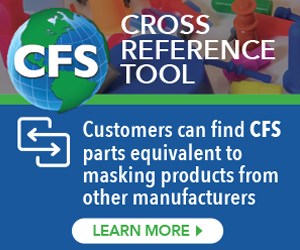TGIC Powder Coatings vs. Non-TGIC Powder Coatings
As raw materials become increasingly scarce, powder coating consultant Rodger Talbert offers insights into using non-TGIC products.

Talbert
Q: Since we began powder coating around 15 years ago we have gravitated to more TGIC Powder for our outdoor product. The results have been reliable and performance has been excellent. We get good sun-light resistance and chemical resistance and very few problems with surface blemishes. Lately, our suppliers are telling us they are finding it harder to get the raw materials to make these products and we may want to try alternative polyester products without the TGIC. We have sampled some non-TGIC products and had some issues. We have to be more careful with film build control to avoid surface blemishes and we are seeing some discoloration on lighter colors. Can you tell me what the status is on TGIC and what we can do about the changes that may come?
A: For those who do not know it, TGIC (Triglycidyl Isocyanurate) is a cross-linking element that can be used in a polyester powder. I began to hear that the feedstocks for TGIC were stressed sometime last year. Much of this stock comes from China and pressures on manufacturing and shipping it have led to a shortage in North America. There have been alternatives in the marketplace for many years now, but TGIC remains the highest-selling powder type in the U.S. The non-TGIC products, mostly Primid-based powder coatings, use HAA (β-hydroxyalkyl-amide) as a cross-linker in carboxylic polyester powder resins and have been dominant in Europe and other regions of the world for a long time now due to concerns about the potential health issues with TGIC.
While these products are widely used in the world market, the North American market has continued to use a lot of TGIC due to certain processing and performance advantages. TGIC polyester can be cross-linked at somewhat lower temperatures than Primid. The non-TGIC products require a minimum threshold of temperature that is somewhat higher and will not properly cure until they reach that temperature. The TGIC products will begin to cure at a lower temperature and can reach reasonable film properties with less thermal input than the non-TGIC products. This is not a problem if the product mass fits with the oven capability and reaches the minimum temperature for long enough to cure. But it can be a problem if the oven is borderline for curing a heavy gauge part.
Another issue is the film thickness. At heavier films, the non-TGIC product may develop some pinholes during the curing process. TGIC is quite tolerant of heavier films and is much less likely to pinhole. Again, not a problem if your application process is conducive to good film thickness control but can be a challenge if you occasionally run too thick.
Another concern is that some lighter colors have shown a tendency to oxidize in the cure oven if exposed to too much heat for a period of time. Good control of the curing process is needed to avoid this.
TGIC has great chemical resistance, UV (ultraviolet) resistance and mechanical properties when compared to other products. It is forgiving of slight variance in process without showing significant loss of performance. That is why it has remained so popular in North America.
However, we may be moved toward using a different product with somewhat lower overall performance and more demands placed on our process due to supply issues. All of these issues can be mitigated with additives in the powder or with more precise control over process, but it puts a little more pressure on the operation to tighten up on application and cure processes. But based on continued pressure on the raw materials, it would be wise to get better and be prepared to use the non-TGIC products at least part of the time because it is not likely to get better, it is more likely to get tighter. The non-TGIC products have worked well for other markets such as Europe and they can work well here. Lines with lower line speeds, good film build control and a good oven should readily adapt if they have to use these materials. If a line has a higher line speed, more application challenges and cure variables they will have to work harder to learn a new set of variables.
My thanks to Kevin Biller of Powder Research Group in Columbus, OH, for discussing this subject with me to compare notes and ideas!
Related Content
Glass Bead Blasting as Plating Pretreatment
What are the best practices for using blasting in preparation for plating? Angelo Magrone of Bales Metal Surface Solutions discusses the ins and outs of glass bead blasting.
Read More3 Tests to Ensure Parts are Clean Prior to Plating
Making sure that all of the pre-processing fluids are removed prior to plating is not as simple as it seems. Rich Held of Haviland Products outlines three tests that can help verify that your parts are clean.
Read MoreCleaning, Pretreatment to Meet Medical Specs ISO 13485 or FDA 21 CFR820
Maximilian Kessler from SurTec explains new practices for industrial parts cleaning, metal pretreatment and decorative electroplating in the medical device industry.
Read MoreHow to Choose Between Sulfate and Chloride-Based Trivalent Chromium
There are several factors to consider when choosing between sulfate and chloride-based baths for trivalent chromium plating. Mark Schario of Columbia Chemical discusses the differences and what platers should keep in mind when evaluating options.
Read MoreRead Next
Episode 1: Early Days - Insights Into the Surface Finishing Industry
Products Finishing’s On the Line podcast for coaters and finishers discusses evolving trends in surface finishing with interviews with powder coating consultant Rodger Talbert and 2021 Finishing Hall of Fame inductee Bill Saas.
Read More






















